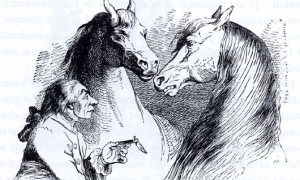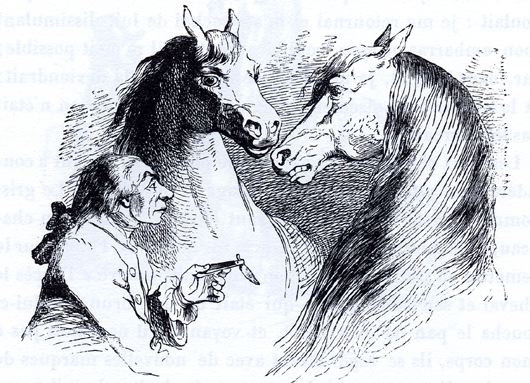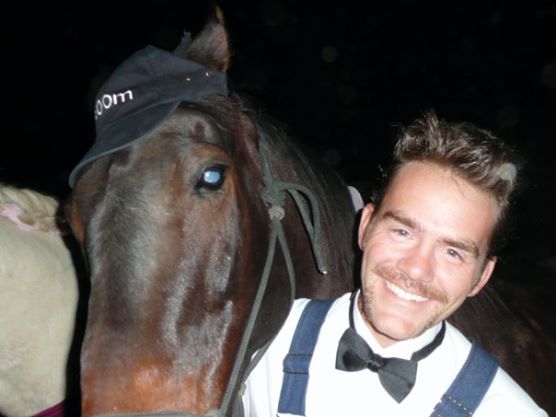Prerequisite: Understanding Anthropomorphizing
Horses are horses. People are people.
Horses aren’t people and people aren’t horses. This doesn’t mean that a person can’t have a nice, understanding relationship with a horse. What it does mean however, is that people (due to their size in relation to the horse) need to be careful and a bit wary of the horse in order to protect themselves from the possible danger of the horse doing stuff that horses normally do that might not be appropriate to do near a person that’s about 1/10 the size.
Example:
You see a horse tied to a tie rail. “Such a cute horse, I just want to squish it!” you think to yourself. Approaching the horse you squeal with joy, fling your arms up at the horse’s head, jump up and down and wrap yourself around its neck kissing the horse vigorously over and over.
This is all very nice. You like horses. That’s sweet. I get it. Problem is, the horse sees you as a crazed predator doing wacky dangerous things in order to eat it. So the likely outcome is that the horse will try to pull away, get snagged on the end of the lead rope and recoil back toward the rail. Meanwhile, because your arms are wrapped around the horse’s neck, you will have been pulled up off the ground with the horse who will now hit the end of the lead rope and come flying back at the rail with your head in between his horse-sized body and a very hard metal railing. Worst case scenario? Yes. But still possible. Also possible that the horse will get a little scared and raise his head a bit to avoid the crazy arms. No big deal? Ok, but you’re starting to teach the horse to be wary of your crazy crazy arms. Also possible that nothing will happen.
The problem is, when things go wrong around 1,000-pound horses, the horse usually fares better than the 100-pound human.
So the big thing to keep in mind is that horses look at the world through horse eyes. NOT HUMAN EYES. And they process all that they see through horse brains not human brains. Those horse brains have taken millennia to figure out how to avoid being eaten while human brains have spent those years learning how to eat prey animals. See the conflict? Humans can understand why a squealing hug is coming at them. Humans can have things like umbrellas and balloons explained easily to them. Horses can’t. For any old horse to be comfortable with a balloon, it takes a lot of time. There are some exceptions but 99% of the time a horse will get spooked by a balloon no matter how often they see it.
Horses do horse things. And if you are going to put your little body close to a horse you need to start thinking about how to be as non-scary as possible with them. Nothing scary should come from you. And the first way to make sure you are not being scary is to think of them as horses not people.
So when you approach a horse, think about how a scared prey animal would like to be approached. How can you be a convincing non-threat? Move slowly, be quiet, breathe and don’t hide anything. Be open and honest. And remember, if that horse gets scared it’s ok. Let them get scared, but you take your time, see what’s happening first before you freak out, then see how you can quietly and safely help to calm the situation.
Last thing. Horses are horses. People are people. Treat a horse like the huge, enormous, scaredy cat that it is and you’ll be safer longer.
btw, I’m not above it all . . .



